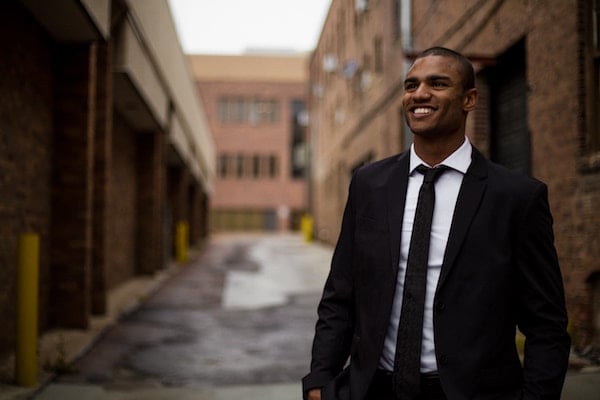Published on
Flexibility and Personalization: How CE Can Evolve to Meet the Needs of Millennial Professionals

Author’s note: Before launching into this topic, I would be remiss if I didn’t mention that many of my comments will appear to paint a large and influential group of people with a rather broad brush. We all agree that there is so much variability within generations as to render most more similar than they are different. That having been said, Millennials have a particular lived experience in their childhood and adolescent years that strikes me as very unique and has the potential to exert a strong environmental influence on the development of those in the Millennial generation.
Although consistent definitions of the age ranges for American generations are difficult to identify, most commonly accept that Millennials were born between 1981 and 1996, putting the oldest well into adulthood and the youngest on the cusp of entering the working world after college. As such, Millennials are firmly in the target audience for continuing education. Because of the state of the current economy, globalization and the changing global marketplace, rapid changes in technology, and the resulting changes in the types of jobs available and the knowledge and skills required to meet the demands of these jobs, Millennials will be the first generation of the American labor force for which lifelong learning and training will be required almost from the beginning of their working lives. So, not only are Millennials the right age for continuing education, but the rapidly changing workforce landscape is also requiring that they retool to secure meaningful employment and stay relevant in their chosen professions.
As I outline below, Millennials are less likely to remain loyal to a single organization (and in many cases, organizations are less likely to be loyal to their employees) and are open to changing jobs frequently. As a result, they will need both formal and informal educational experiences to find and maintain employment experiences that fit their values and lifestyle preferences. Although we often hear that every generation is different from those that preceded it, it strikes me that the way that the world changed during Millennials’ childhood years, combined with the current state of the American workforce, the perceived talent gap, and global competition and politics, represents a unique and complex combination of factors that is going to involve some creative solutions. The Millennial generation seems very unique to me.
We also can’t forget that, for some of these same reasons, the landscape in higher education itself is changing rapidly and there is pressure on colleges and universities to evolve at an unprecedented and often uncomfortable pace. In my opinion, continuing education divisions have been at the leading edge of higher education for over a century in many ways. Because of our focus on lifelong learning and access to education (both credit and non-credit) for students of all ages, continuing education divisions and organizations were the first to explore and implement prior learning assessment programs, accelerated programs, online learning, competency-based education, microcredentials, stackable credentials, and a host of other educational structures, formats and delivery options. This focus on lifelong learning (and accompanying programs and services) is now required by students of all ages. Coupled with the financial challenges facing many American colleges and universities, increased competition, and changes in federal, state, and accreditation rules and regulations, colleges and universities have a lot to think about in a short period of time.
Meeting the complex needs of a unique generation with an education sector that is undergoing immense change is going to challenge all of higher education.
Understanding the Expectations Millennials Bring to their CE Experience
When considering Millennial expectations for higher education institutions, it’s important to remind ourselves of the lived experience that Millennials share, as well as some of the general expectations and values that they seem to hold:
- Focused on Values, Not Just Outcomes
Although the generations are clearly more alike than they are different, the life experience of Millennials presents a notable contrast to previous generations. Millennials were born and raised within a markedly different social, intercultural, technological, political and economic environment than preceding generations. Whether it’s helicopter parents, packed activity schedules, immediate access to information, changes resulting from the 9/11 attack, or the Great Recession, the lived experience of Millennials during childhood and young adulthood is undeniably unique. Perhaps as a result, Millennials seem to be significantly more focused on responsibility to their communities and the environment than any preceding generation, and choose to work in organizations that are socially responsible and community oriented. Just as they want to work in a setting that not only provides them with a salary, but also aligns with their values and beliefs, Millennials expect to find educational institutions that do the same.
- More Interested in Fit than Brand Loyalty
There is a new model for the world of work that involves automation, the immediate availability of information, the knowledge economy, and a demand for “creative class” solutions to increasingly complex problems. These work models are accompanied by changes in expectations about the structure of work environments, as well as when and where work can be done. Additionally, Millennials are less loyal to companies and more interested in finding employment that fits their values and lifestyle. With regard to continuing higher education, Millennials expect to be able to learn not only when and where they want via mobile and other technologies, but also to be able to structure and customize their learning experiences in ways that fit their personal preferences and lifestyles. Only being able to learn from one individual person at a specific time and a particular location doesn’t align with Millennials’ lived experience or expectations.
- Looking For Creative and Personalized Models
Millennials’ experience of the world, especially as young adults, is just-in-time/as-needed—not only for information, but for products and services as well. Whether it’s catching a Lyft, ordering dinner via mobile phone, or shopping on Amazon, Millennials can get virtually anything they want in short order. Because of the rapid evolution of technology and the changing employment landscape, this occasionally includes promotion to high-paying jobs, many of which were only recently created. Learners not only expect to be able to learn in their own time and in their own way; they also expect support services to be readily available, even if it involves use of automation and artificial intelligence. Although I only have anecdotal evidence, it’s my impression that just as Millennials have little patience for following normal pathways to leadership positions and promotions, they will expect universities to allow them to chart their own pathways to credentials. Millennials are a remarkably creative generation and they have seen creativity rewarded in entrepreneurs ranging from Mark Zuckerberg to Ninga, who makes a handsome living playing video games. They will expect opportunities to be creative in how they learn, how their credentials are structured, and the contents of those credentials.
- Less Value in Traditional Credentials than in Competencies
Millennials are less concerned with traditional credentials and getting in line to climb the corporate ladder and are more interested in competencies. For Millennials, good ideas and the best solutions win over ideas and solutions generated by the person with the most credentials, experience or seniority. They will expect the same from their education. Not only will they expect to be taught by experts who can teach them to apply what they learn, but they will also expect competencies to be more important than traditional seat time.
How CE Divisions Can Adapt to Meet These Expectations
Colleges and universities that not only have programs related to these values (ranging from sustainability to justice studies to technology and engineering), but also have an institutional commitment to providing an applied, useful educational experience within an environment of social responsibility, community, and sustainability will find greater appeal among Millennials.
Here are a few key thoughts to bear in mind when it comes to serving the Millennial generation:
- In addition to offering academic credentials in topics related to sustainability and social justice, develop an organizational culture that values the same. Walk the talk when it comes to sustainability.
- Allow students to be creative in their own educational journey by offering student-designed credentials, alternative assessment methods, etc.
- Use technology, but in meaningful ways. For example, use artificial intelligence and learning analytics to help tailor the learning experience to the individual.
- Develop quick-response support systems, even if responses don’t immediately address an issue.
- Allow for “just-in-time” learning models where students learn at times, in places, and in increments that fit their immediate learning needs.
- Make sure that any educational programming (credit or non-credit) is applied and tied to some sector of the workforce.
- Develop robust prior learning assessment systems.
- Explore competency-based programming (both credit-based and direct assessment)
- Make it affordable. Millennials are likely to be the first generation that won’t experience a higher standard of living than their parents. When Millennials engage in continuing education and are paying for it themselves, affordability will be important.
Additionally, it is imperative that CE divisions meet the Millennial generation where they are: online. This has significant implications not just on programming, but on marketing and enrollment functions as well.
Although print marketing still has its place, digital strategies will need to be the primary vehicle for encouraging this generation to engage with the idea of continuing their education. Authenticity and personalization are key to reaching Millennials, and technology has given us the ability to take this to a much higher level than print ever could. While switching to a digital strategy may sound like an easy transition to make, resources often need to be reallocated to accommodate for collecting and creating richer content that can be displayed across multiple platforms.
Millennials are tough on marketers, especially in the area of continuing education. Because this generation is split into several populations that engage differently online, content needs to be versatile and speak to the unengaged window shopper just as much as to the evangelical social media junkie. This can be a challenge for continuing education, when so much of what we offer can’t always effectively be summed up in one image or a short phrase. In addition to developing engaging content, resources need to be devoted to analyzing audience engagement across all digital platforms (social media, web and e-mail) to ensure the strategy is actually reaching and resonating with the intended segments. Measuring the effectiveness of content can provide incredible insight into market behavior which, in turn, can shape recruitment strategies and aid in better predicting enrollment.
Author Perspective: Administrator



